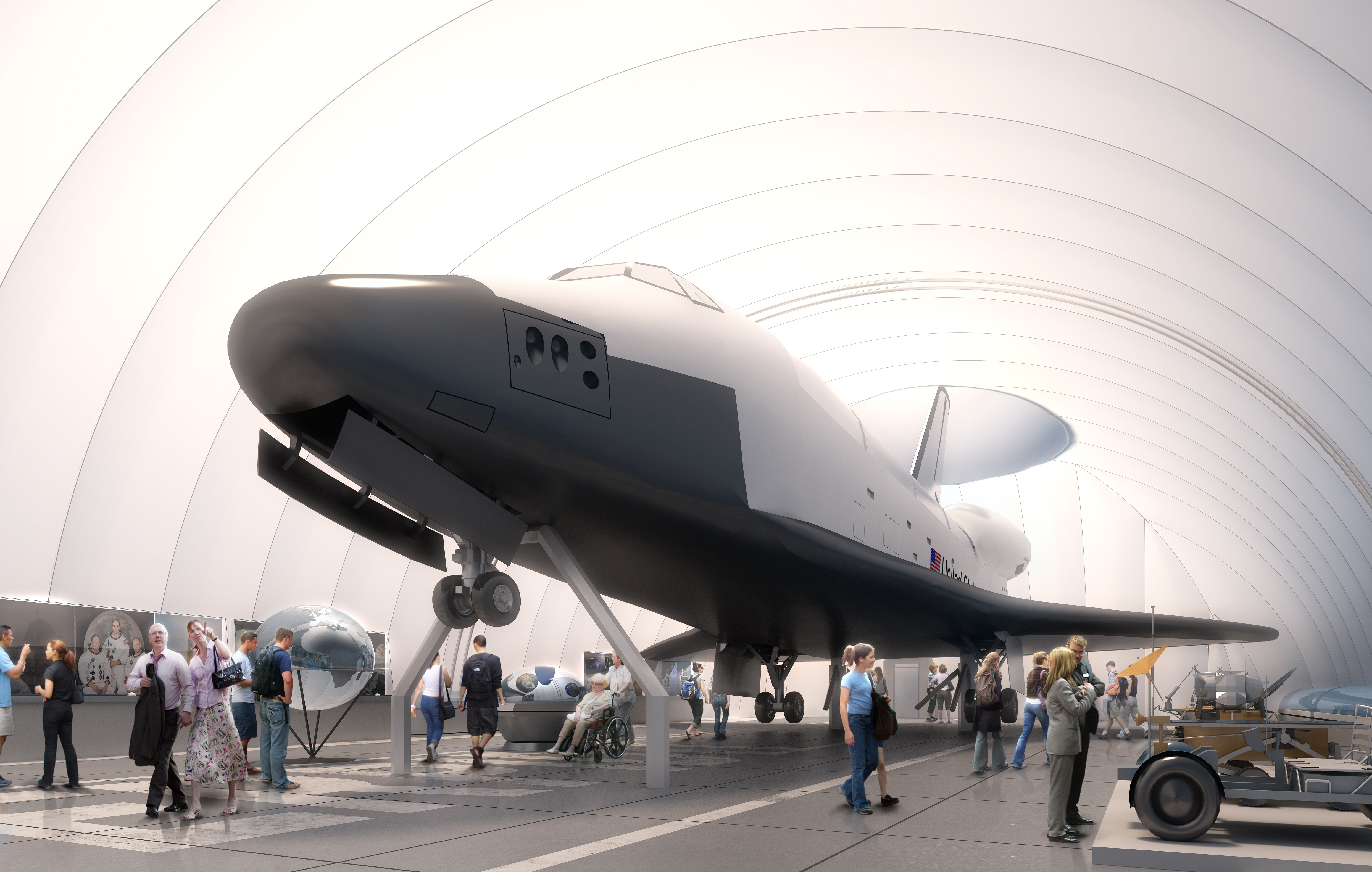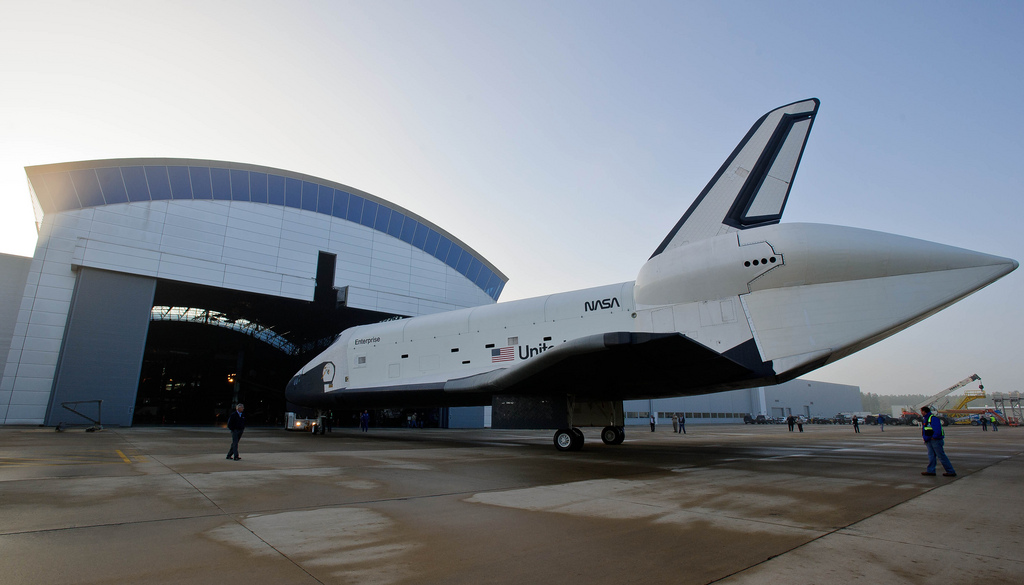Space Shuttle Enterprise's New Keeper: Q&A With Intrepid Museum Curator

NEW YORK - New York City's Intrepid Sea, Air and Space Museum is gearing up to welcome the space shuttle Enterprise to its permanent collection this summer.
Enterprise, a prototype shuttle that never made it to space, but paved the way for the rest of the fleet, was gifted by NASA to Intrepid when it assigned its three retired shuttles to museums last year. The orbiter is due to fly from its old home in Virginia (it had been on display at the Smithsonian National Air and Space Museum's Udvar-Hazy Center) to New York's John F. Kennedy International Airport Friday (April 27).
CNN is airing live coverage of the flight and landing here, if you want to watch.
SPACE.com caught up with the new keeper of Enterprise - the Intrepid's Eric Boehm, curator of aviation - to talk about the museum's plans for its new addition.
SPACE.com: You had to let go of a few airplanes in your collection to make room for Enterprise. Was that a difficult decision?
Boehm : That was a little tough. It's hard to get rid of the collection, or any part of it. And then to decide which one goes was kind of a process. We had to get a certain amount of square footage available. It was like, 'Well, how about this one because it's big. Well, maybe this one, because it doesn't have anything to do with Intrepid?' It was very difficult. [Where to See America's Greatest Spaceships (Infographic)]
We got rid of a British airplane called Scimitar. Skyknight was tough, because the type has pretty cool history with action during the Korean War, but then again, Intrepid never went to the Korean War, so that kind of put it on the chopping block. That made us get rid of another plane that flew against the Skyknight in Korea. All three went to the Empire State Aerosciences Museum in Schenectady, New York.
Breaking space news, the latest updates on rocket launches, skywatching events and more!
SPACE.com: What's behind the plan to put Enterprise in a temporary facility on Intrepid's deck while you work on a permanent building for the orbiter?
Boehm : You can't build a building that fast in New York City. It's only been a year since we got the word that we're getting her. In New York City it takes that long to get a permit. We still have to figure out where it's going to go and what it's going to look like and then start the permit process.
SPACE.com: What will the temporary facility be like?
Boehm : It's an inflatable building so it has no structure. 'Air-supported' is the technical word.
We weren't just going to put it in a bag and walk away from it. There's a lot of interpretation going around it, a lot of images. We're not overloading it with a lot of text, though there is text. We can get a few hundred in here. You'll definitely have a path, there will be a story line to take you and carry you around.
SPACE.com: Will there be a separate fee to go inside?
Boehm : There is, but it's going to be nominal.
SPACE.com: Why will the permanent display be in a separate building, and not here on the aircraft carrier?
Boehm : As you walk around the Intrepid, we're nothing but the ship. There's not a ton of space here. A separate building, with a new theater in it, maybe, classrooms, they could delve into the special events stuff, put a banquet hall in there, or a planetarium, or an IMAX. You could just go crazy thinking about it.
There's no room for any of that stuff on the ship. There's almost no temporary exhibit space now.
SPACE.com: How will having Enterprise change the overall character of the museum?
Boehm : We've always told a space story here because [the Intrepid aircraft carrier] did recover the capsules for Scott Carpenter's mercury mission, and Gus Grissom and John Young's Gemini mission.
There's the actual crane that took Grissom and Young's capsule out of the water (points). So we've always had a little bit of a space story here, and now we've got more.
SPACE.com: Does it bother you when people complain about New York getting a shuttle, when other hopefuls like Houston did not?
Boehm : No, I’m from New York City (laughs). Well, what did NASA have in mind when they sent one here? Probably eyeballs.
There's a level of excitement. I think everybody's appetite is whetted. It's just really cool for New York City to have this awesome vehicle here. We have so many people who want to come see her, all these international visitors, it's going to be crazy.
SPACE.com: What decisions did you have to make about how to display and explain Enterprise?
Boehm : We decided pretty early on that with Enterprise, let’s not make believe this is a spaceship that flew into space, 'cause Enterprise is just cool enough as she is.
She was the prototype for the rest. If you've ever read any of the history on Enterprise, there's a lot of great stories there. Her trip to Europe, and to the World's Fair. She's been mated to tanks and boosters, and she's been rolled out to launch pads, both in Florida and California. There's a lot of this cool history around Enterprise. In my opinion it was a no brainer to just tell that story.
You can follow SPACE.com assistant managing editor Clara Moskowitz on Twitter @ClaraMoskowitz. Follow SPACE.com for the latest in space science and exploration news on Twitter @Spacedotcom and on Facebook.
Join our Space Forums to keep talking space on the latest missions, night sky and more! And if you have a news tip, correction or comment, let us know at: community@space.com.

Clara Moskowitz is a science and space writer who joined the Space.com team in 2008 and served as Assistant Managing Editor from 2011 to 2013. Clara has a bachelor's degree in astronomy and physics from Wesleyan University, and a graduate certificate in science writing from the University of California, Santa Cruz. She covers everything from astronomy to human spaceflight and once aced a NASTAR suborbital spaceflight training program for space missions. Clara is currently Associate Editor of Scientific American. To see her latest project is, follow Clara on Twitter.

